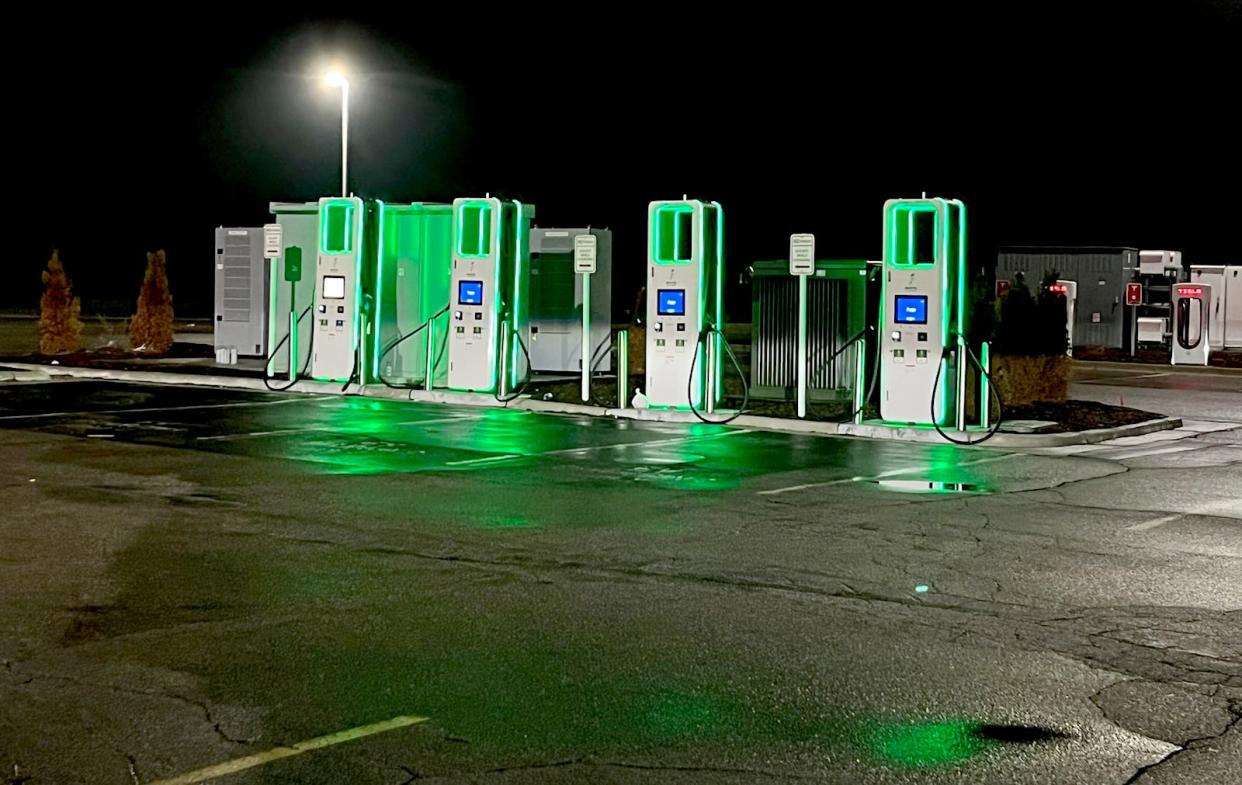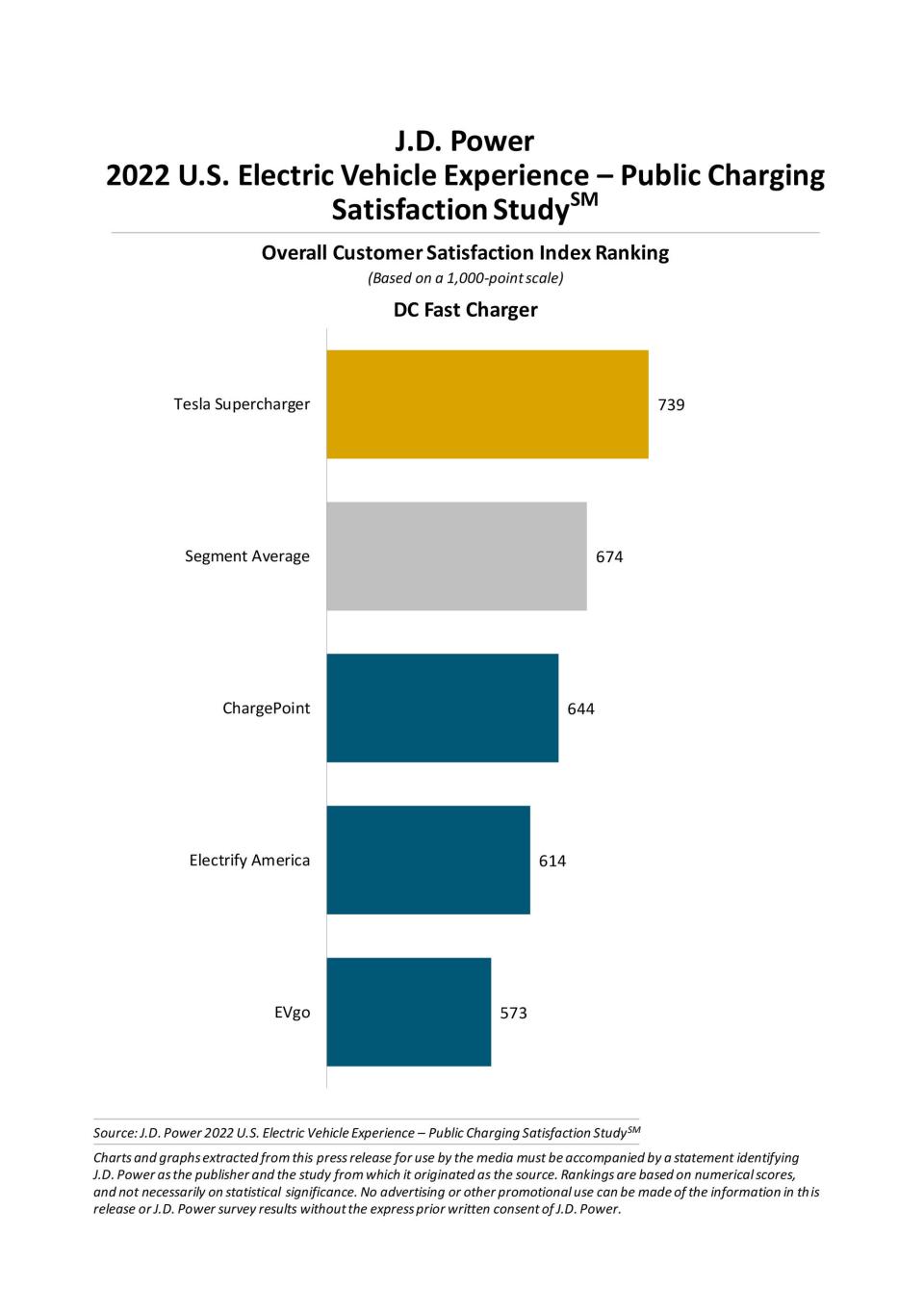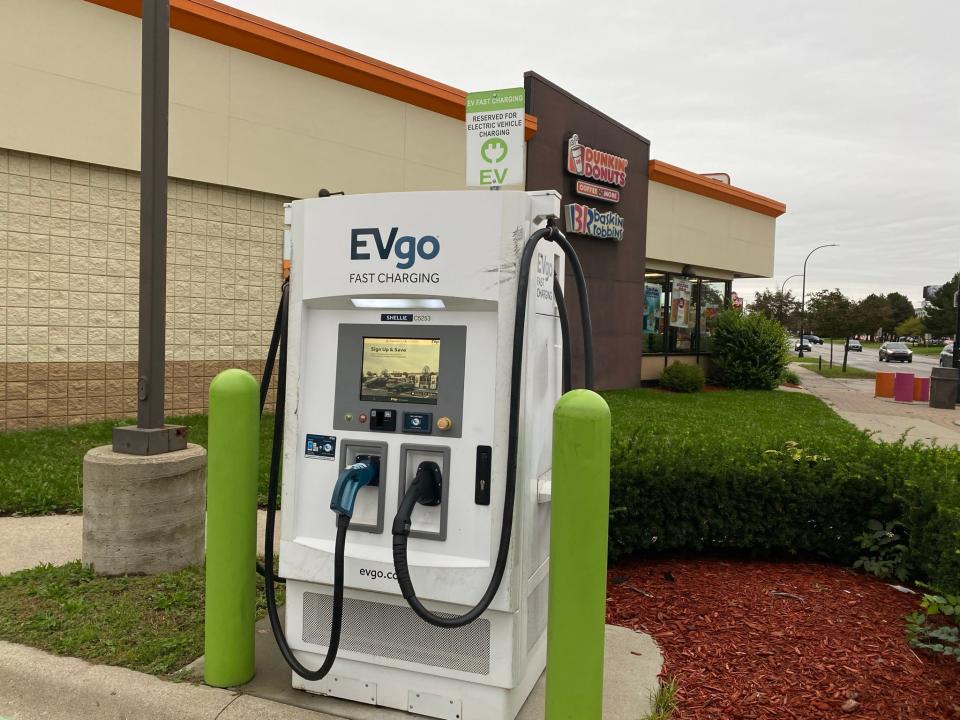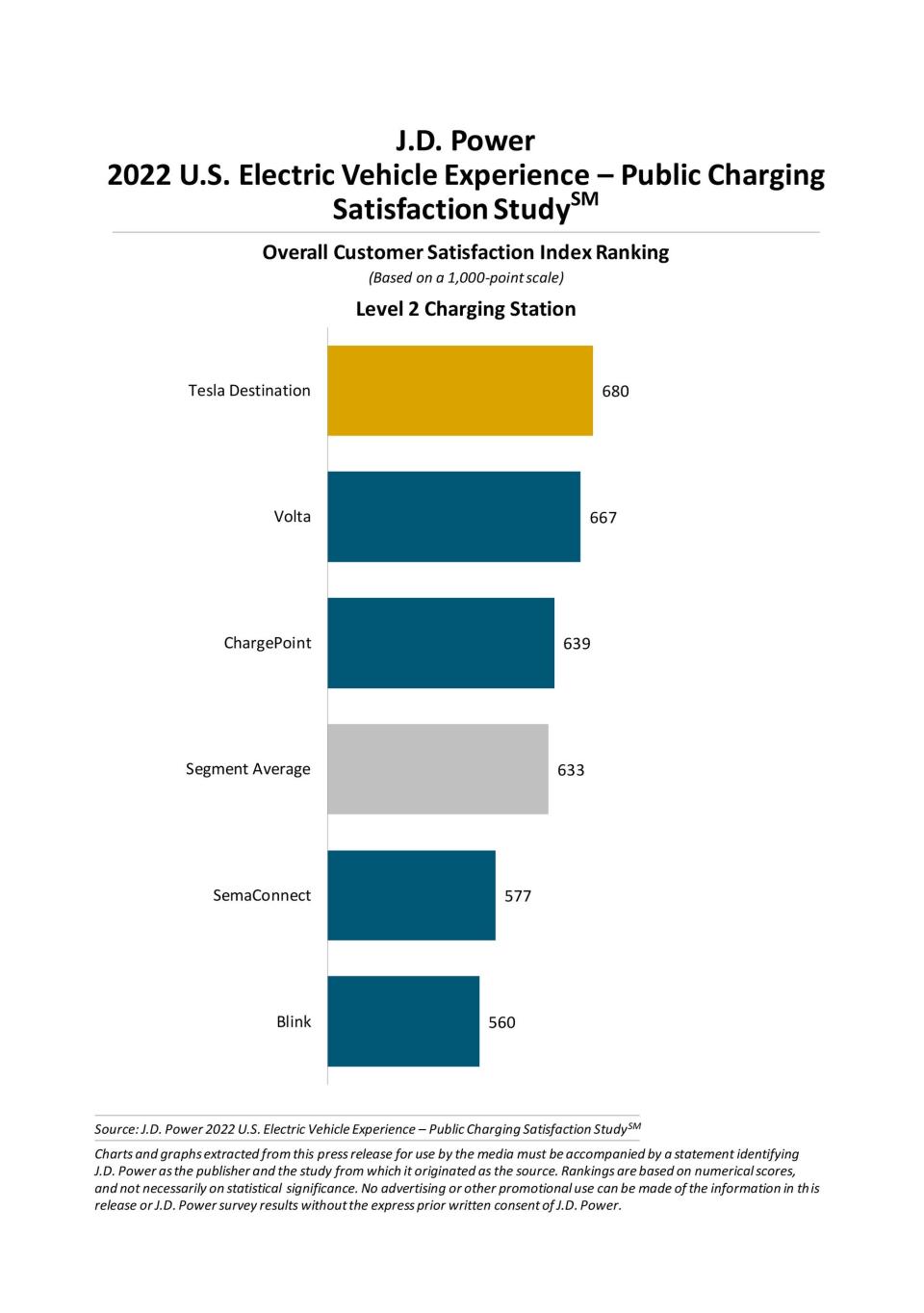EV drivers aren't happy with public chargers, new survey says. Neither am I

Electric vehicles are getting better, but commercial charging stations aren’t.
That’s the verdict of a new survey by J.D. Power, overwhelmingly supported by issues I’ve recently encountered trying to charge two impressive new EVs at commercial DC Fast charging stations.
Just this month, I’ve had a charger stop working long before the battery was full, and I've been double-billed for a single charge. When was the last time anything like that happened to you at the gas pump?
“What if one of every four times you went to the gas station, the pumps weren’t working?” asked Mark LaNeve, president of Charge Enterprises, which installs and maintains charging stations. “That’s totally unacceptable.”

Unacceptable, but typical, according to the survey, which quizzed 11,554 drivers about charging EVs at public stations — both Level 2 and DC Fast Charger — in the first half of 2022.
“The current state of public charging really isn’t very good,” said Brent Gruber, J.D. Power executive director of global automotive and managing director of electric vehicle experience.
The survey concluded: “The growth of EV sales during the past year has been remarkable but has added stress to an already beleaguered public vehicle charging infrastructure.”
It added: “In this growth spurt, owners … are finding the charging infrastructure inadequate and plagued with nonfunctioning stations.”
"Public" is a key word. Department of Energy research shows that more than 80% of EV charging happens at the owners’ home or work, where 240-volt, or Level 2, chargers, top up the batteries.
More: Everything you need to know about charging an EV
More: Cadillac's Lyriq EV answers some questions, leaves others open
From failure to charge to being overcharged
Charging while you work or sleep is easy and convenient. EV owners rave about the ability to start every day with a full battery.
Conversely, the inability to find equally convenient and reliable chargers on long trips, or if you unexpectedly need to charge in your home area, is among the most common reasons other drivers are hesitant or downright hostile to electric vehicles.
“Public charging continues to provide challenges to overall EV adoption and current EV owners alike,” Gruber said. “Not only is the availability of public charging still an obstacle, but EV owners continue to be faced with charging station equipment that is inoperable.” Public satisfaction with Level 2 chargers fell in the Power study, while the faster DC Fast charging was flat.
“Regardless of who’s in first place, satisfaction is not very high,” Gruber said.
Charging while shopping sounded good
In the last three weeks, I’ve had a charger — located in a Meijer parking lot — start, then quit moments after I walked across the parking lot into the grocery store, expecting the battery to be full when I returned. Instead of the 120-odd miles of range I expected, the charger gave me juice for about 10.
The charger, an EVgo 350kW DC Fast Charger that should be an EV owner’s best friend, packed it in again when I tried a couple of days later. It worked as advertised on my third attempt, delivering 31.3 kW in 29 minutes. I sat in the car the whole time this time, reading a novel I brought with me. Fool me twice, shame on you; fool me three times, I may not be able to drive home.

So much for the convenience of shopping or getting coffee while my car charged. Not to mention that the smartphone app I used for the transaction crashed repeatedly on earlier attempts to charge.

Or that Electrify America, the biggest charging service, recently charged my credit card twice for a single charging session. Electrify America’s customer service promised to rectify the error, but has that ever happened to you at a Shell station?
These self-inflicted wounds could be fatal to EV adoption.
Because home charging is so prevalent, many EV owners' “first experience with DC Fast charging may be on the Thanksgiving visit to Grandma, which is not when they want to find out their car or its app led them to a charging station that's broken,” said journalist and EV analyst John Voelcker. "Carmakers and public funders need to be far more aggressive in requiring a set level of reliability — north of 95% regardless of reason — and ensuring it's independently monitored.”
And then there was Tesla
Tesla got this right years ago by building a nationwide network of chargers only its vehicles can use. They’re virtually flawless, scoring well above charging companies like Electrify America, EVgo, ChargePoint and Volta in the survey.
“Tesla has a huge advantage,” over other automakers, Gruber said.
It’s not even clear whether other automakers understand what a huge asset Tesla’s charging network is. None is inclined to create a network of proprietary chargers, but some have begun to address the issues.
Ford monitors charging stations, reports problems and removes consistently underperforming stations from those it recommends to owners.
General Motors is working with Pilot Flying J truck stops to build a network of chargers along interstate routes. EVgo — No. 4 in customer satisfaction in the DC Fast Charger category of the survey —will run the chargers, so keep your fingers crossed. Only Tesla's DC supercharging network came in above the segment average, evidence of how great the service gap is, and how much the EV automaker's Supercharger network dominates the industry.
Volkswagen was in the game early, funding Electrify America as part of it penance for deceiving regulators about diesel emissions.
Things charging companies should do, according to experts:
Fix chargers quickly when they malfunction.
More chargers. “People will sit for 20-30 minutes, not 1½ hours,” LaNeve said.
More locations, particularly on interstate highways and other long-haul routes.
Locate chargers in convenient, well-lighted and heavily trafficked places.
Give drivers something to do while charging: Offer a coffee shop, food or Wi-Fi. “The average DC charging session is 35 minutes. Drivers’ level of satisfaction for something to do is quite low,” Gruber said.
This article originally appeared on Detroit Free Press: J.D. Power survey finds EV drivers aren't happy with public chargers

